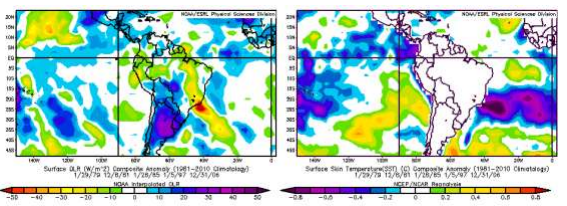Floods in Brazil
Atmospheric systems are responsible for creating climate diversity and identifiable weather and precipitation patterns in Brazil and South America. A high frequency of flood events occur in several geographic regions during the wet season from December to March. The dry season from May to August only has a few flood events registered.
Extreme weather events from 1979 to 2010, grouped by region, were analyzed to understand how atmospheric features related to rainfall patterns. Researchers evaluated anomalies in precipitation rates, sea surface temperature (SST) and outgoing longwave radiation (OLR) to discover if anomalous atmospheric behavior was involved in the patterns.
Most of the events could be related to El Niño episodes, the South Atlantic Convergence Zone (SACZ), or the Madden-Julian Oscillation (MJO). Otherwise, the events were a consequence of intensified but usual atmospheric circulation on both small and large scales. The analysis also revealed that more than one event might happen at the same time in different regions.
This study concludes that the causes for the flood events in Brazil are the result of both local and global systems. The Figure below shows the SACZ causing high rainfall (OLR anomalies) and the association of these events with a negative SST anomaly. El Niño episodes are not related to these events and cannot be considered a cause of these floods.

